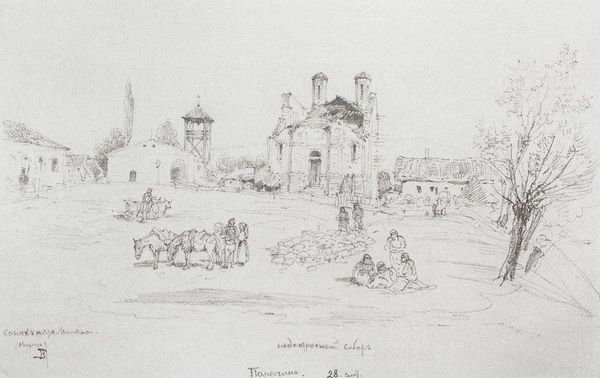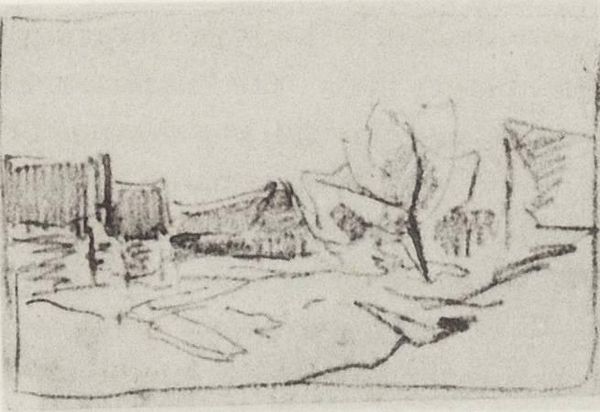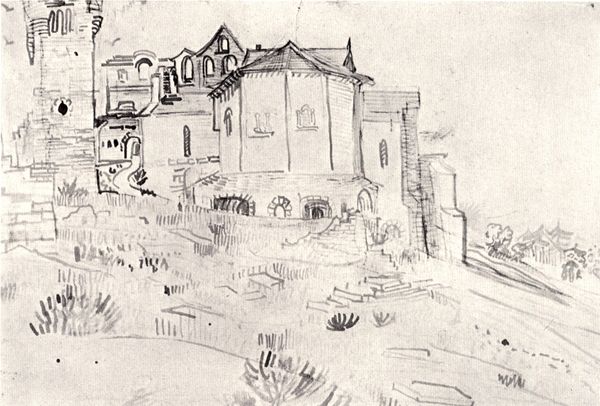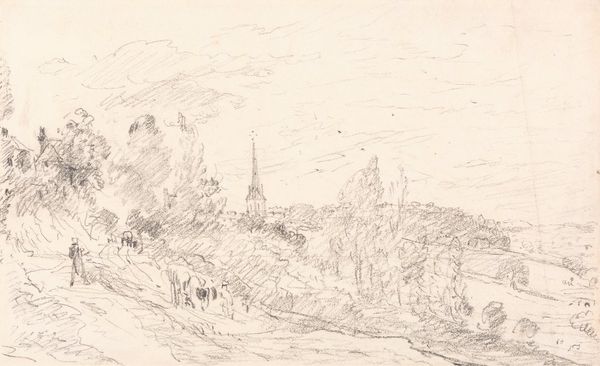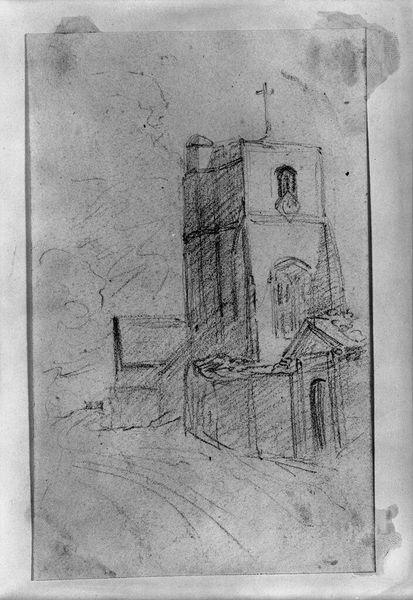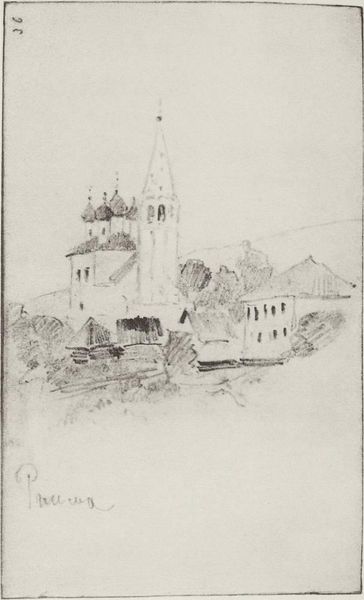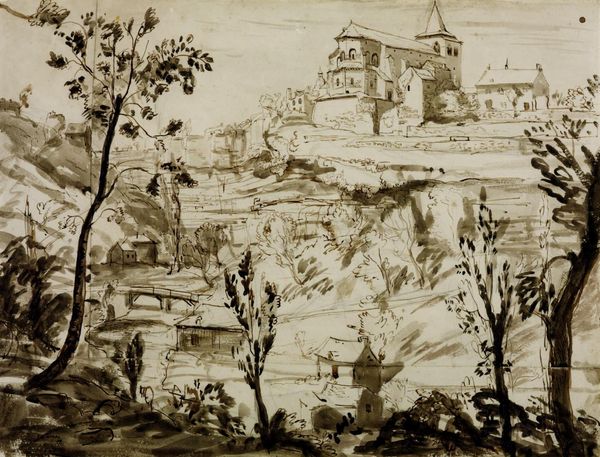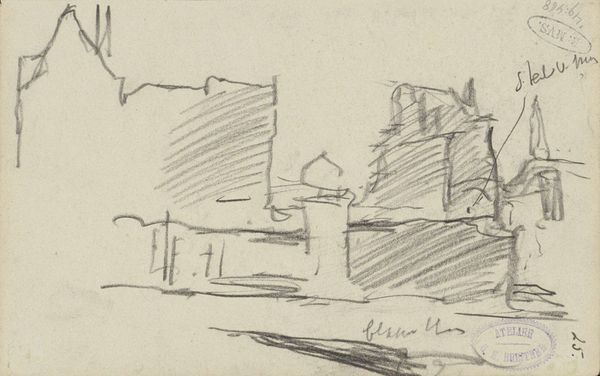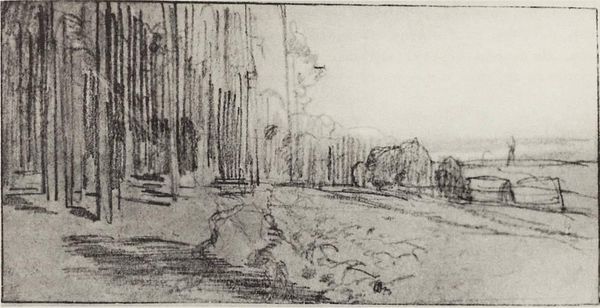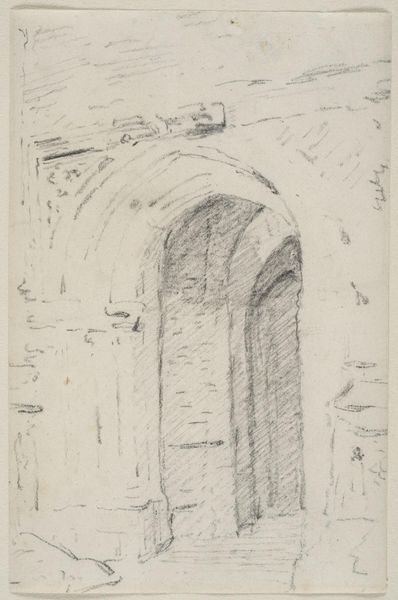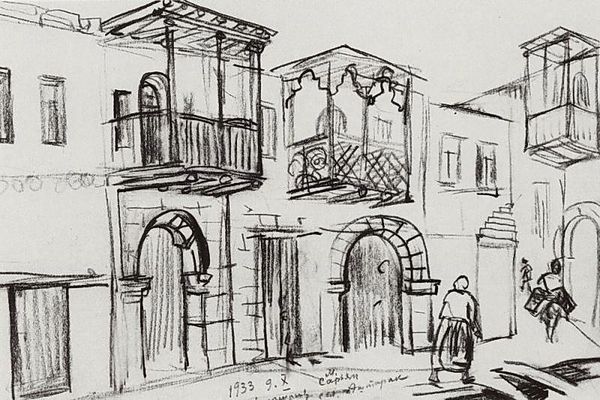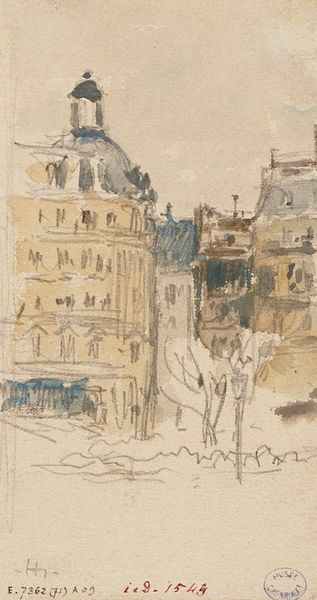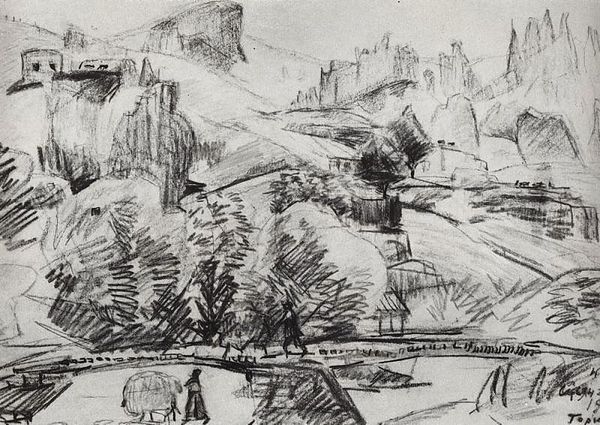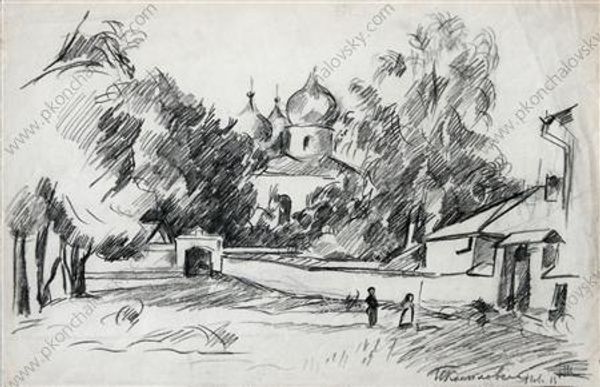
Copyright: Public domain
Curator: Here we have Isaac Levitan's "Cypress Trees at the Mosque," a pencil and charcoal drawing created in 1886. Editor: It strikes me as melancholic. The stark black trees against what I assume is a mosque give a somber, almost haunted feeling. Is this typical of his work? Curator: Levitan's landscapes often explore themes of loneliness and the transience of life. This work, though a sketch, embodies that sentiment. The cypress trees, traditionally symbols of mourning, frame the mosque, possibly suggesting the intersection of mortality and faith. Editor: Ah, the cypress as symbols of mourning… Of course. I can almost feel their deep resonance with death, especially given the Russian Orthodox association with cemeteries and remembrance. The mosque in the background... the way its dome fades into the distance; does that play into Levitan's societal view? Curator: That is certainly a fair suggestion; Russian orientalism viewed the Muslim world in varying ways from fascination to suspicion. What's remarkable is the directness of the medium. Pencil and charcoal sketches in the Realist style often offered artists a chance to explore the starker social conditions of their society in quick impressions. He uses it to explore deeper emotions linked to cultural identity at a moment of tension, between Russian tradition and Imperial expansion in the 19th century. Editor: It makes you wonder about the social impact of portraying a mosque. The darkness in the foreground definitely gives that weight… was this drawing ever published? Curator: The question of the painting's exhibition history and critical reception is, unfortunately, difficult to answer in certainty. However, such subjects always evoked very pointed and passionate responses during the time of the Russian Empire. I would assume that Levitan had to have some kind of sponsor within some part of the Russian Aristocracy. Editor: Thank you. I find it amazing how a sketch like this can evoke so many powerful thoughts and symbols tied to both individual and societal grief and historical power. Curator: Yes, the work serves as a potent reminder of the ways in which visual representation can shape social and cultural narratives during an epoch of imperialism.
Comments
No comments
Be the first to comment and join the conversation on the ultimate creative platform.
